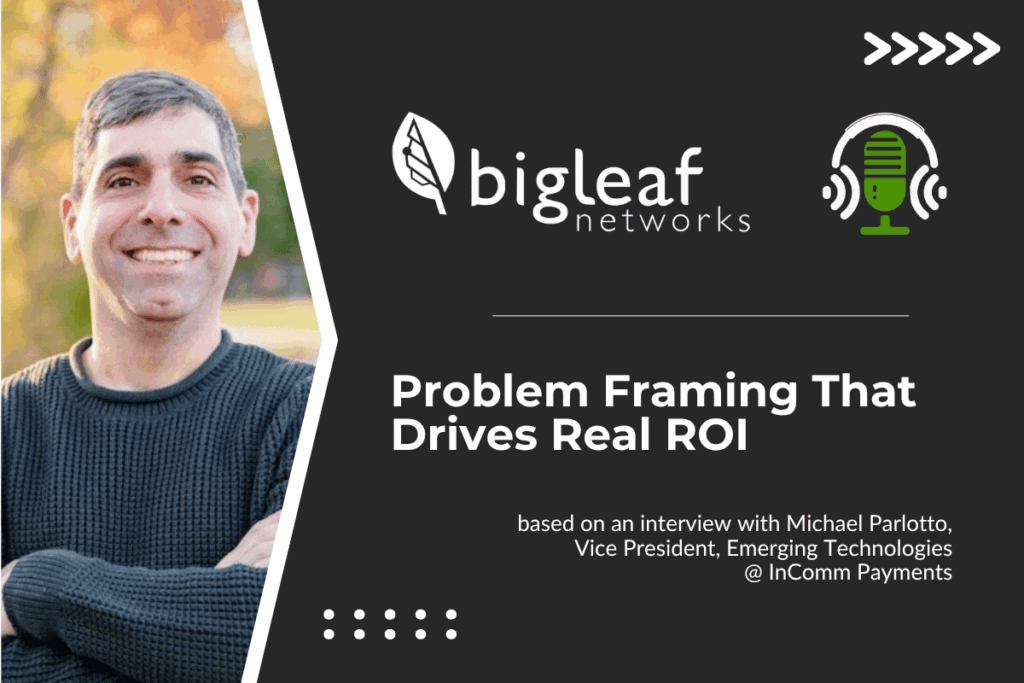AI-driven products only perform as well as the networks behind them. Kiosks, mobile apps, and connected systems depend on connectivity that isn’t always guaranteed. Michael Parlotto, Vice President of Emerging Technologies at InComm Payments, shares how his team designs for uneven conditions through edge processing, offline modes, and secure synchronization. The goal: keep user trust and business continuity intact, even when signals drop.
Design for the Real World
Resilience isn’t an add-on—it’s a foundation. “Definitely, resilience is one of the key things that our customers are looking for in an embedded finance solution provider to provide resilience, supportability, and all of that.”
Michael advises teams to design with reality in mind. Field environments change constantly, and not every location has the same bandwidth or infrastructure. “If you’re putting a kiosk into a location that doesn’t have network capabilities, then you may be looking at an IoT solution or an on-the-edge processing solution.” Building for variability ensures customers can complete tasks without worrying about connection loss or data failure.
Key Takeaways
- Assume inconsistent connectivity from day one.
- Move time-sensitive work to the edge when possible.
- Use intelligent sync to preserve continuity after downtime.
- Bridge on-prem, cloud, and data centers securely.
- Protect customer data across every hop and handoff.
“Definitely, resilience is one of the key things that our customers are looking for in an embedded finance solution provider to provide resilience, supportability, and all of that.” – Michael Parlotto
Move Work to the Edge
AI experiences need responsiveness, even without constant connectivity. “Do I need an offline mode to be able to process this?” Michael asks. “Do I need to have an on-edge solution so that they can process stuff, gain some data, and then push it back up to the cloud at a later point?”
This hybrid model keeps interfaces usable and data accurate while bandwidth recovers. His team’s current “offline to online” project syncs stored transactions once the connection returns—maintaining uptime without user frustration. Edge-first design like this transforms unreliable networks into manageable operating environments.
Secure Every Hop
Resilience means little without security. “Security is another key aspect of that, ensuring that, with AI, you have a lot of data going back and forth, and customer data in many cases, especially in the healthcare space.”
Michael stresses a full-path approach—protecting data at rest, in transit, and across every network layer. Cloud-first doesn’t mean cloud-only; success depends on aligning data centers, people, and infrastructure with hosted environments. “You have to look at the security of those networks and your applications as well to protect your customer.”
The Architecture Behind Trust
AI reliability isn’t just about faster models—it’s about stable, secure delivery. Teams that anticipate connection gaps, balance edge and cloud resources, and embed security at every layer will earn customer trust that lasts.
Michael Parlotto’s framework connects AI performance to network readiness, showing how true innovation depends on infrastructure that never leaves the user stranded.
Watch and Read
📖 Read the companion articles and more:
- Watch the episode and check out the podbook
- How Innovation Centers Navigate AI Hype and Deliver Real Results
- Problem Framing That Drives Real ROI
Go Beyond:
- Watch the YouTube Playlist of video episodes
- Watch the YouTube Shorts Playlist
- Subscribe to the LinkedIn Newsletter
- Listen on Captivate: Go Beyond the Connection
- Follow us on social: Linkedin | Facebook | Instagram
- Learn more about Bigleaf Networks
